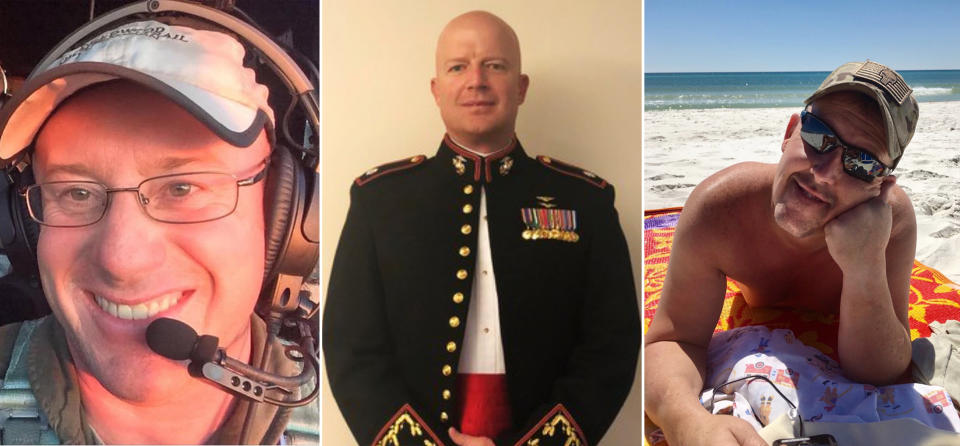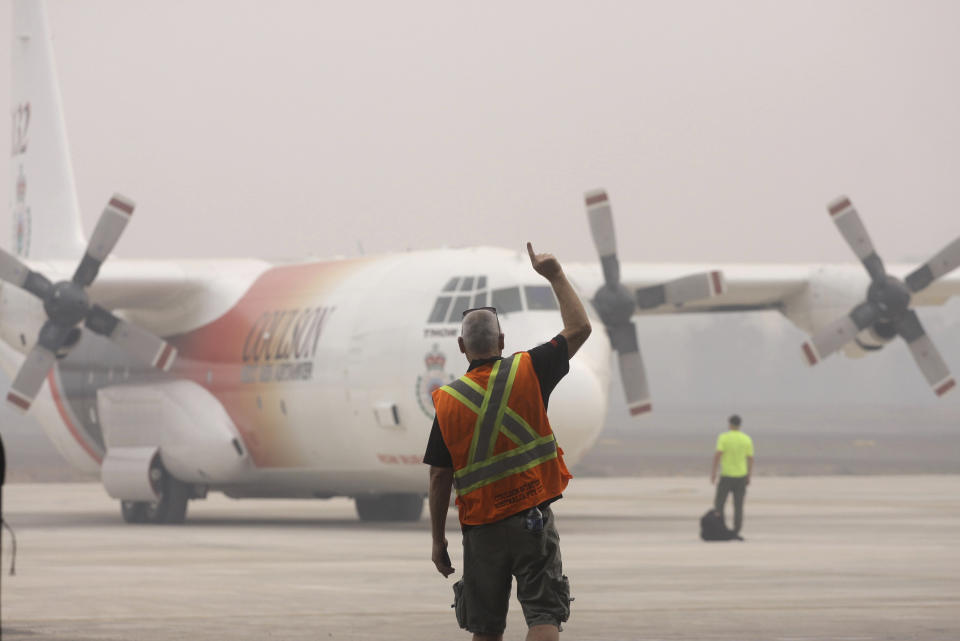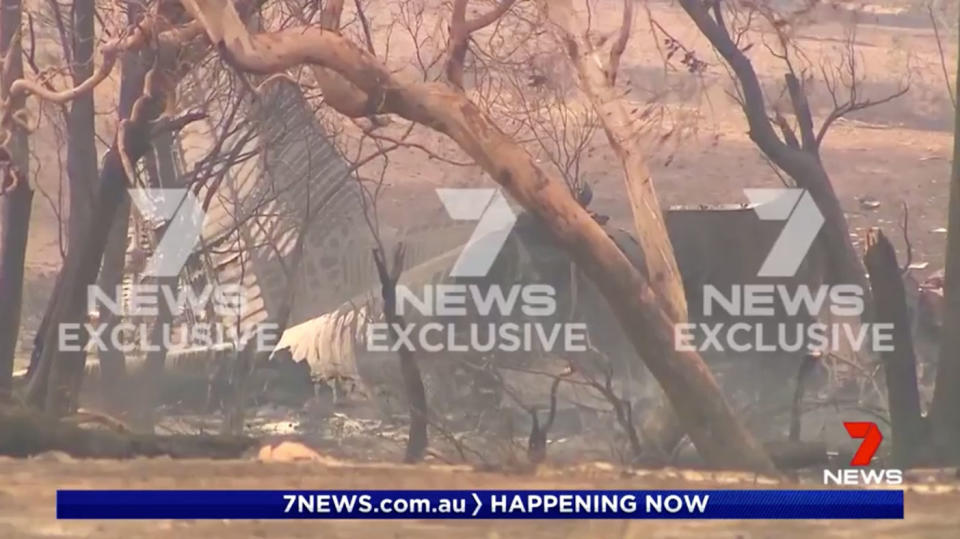Mystery remains over cause of tragic water-bombing crash which scattered debris over a kilometre
The bodies of three US firefighters who died when their air tanker crashed in southern NSW are being retrieved before their families arrive in Sydney on the weekend.
Ian McBeth, 44, Paul Hudson, 42, and Rick DeMorgan Jr, 43, died after their aircraft crashed in the NSW Snowy Mountains on Thursday.
Investigators say the crash site of a firefighting aircraft is more than a kilometre in length and their families will be able to visit the “complicated” crash site northeast of Cooma if they wish.
It hasn’t been determined what caused the plane to crash, but NSW RFS commissioner Shane Fitzsimmons said “there was a large fireball”.

Chief Commissioner of the Australian Transport Safety Bureau (ATSB) Greg Hood told reporters on Friday the plane “impacted heavily”.
“The crash site covered a good kilometre just in length," he said.
Mr Hood said the “early understanding” is the aircraft crashed after releasing fire retardant liquid.
The American crew members died after their plane crashed while fighting bushfires on Thursday.
The trio worked for US charter company Coulson Aviation which had been contracted by the NSW Rural Fire Service to fight the bushfires.
The Canadian company said captain Ian McBeth was a highly qualified and respected C-130 pilot with years of fire fighting experience in the military and with Coulson.
"Ian's love for his wife and children was evident for anyone who spent time around him," Coulson said in a statement.
His partners, first officer Paul Clyde Hudson and flight engineer Rick DeMorgan Jr, were also highly experienced military airmen.
Coulson's owners are expected to arrive in Sydney this weekend carrying the full maintenance history of the aircraft.
"We honour the amazing crews who do incredible things in dangerous circumstances supported by world-class operations," the company said.

Mr Hood said part of the investigation into what brought the aircraft down will involve looking into air traffic control data.
He added that crews will spend time on the ground gathering evidence at the crash site and securing any hazards.
NSW Police Superintendent Paul Condon said there’s not much of the plane remaining intact.
The US firefighters and the three NSW firefighters who have died battling fires this season will be remembered in a state memorial service on February 23.

ATSB investigators on Saturday will make the site safe by securing aviation fuel, the magnesium wheels and any unexploded oxygen bottles.
They'll then locate the plane's voice recorder and take it back to Canberra "to see what the exchanges may have been in the cockpit during those final moments," Mr Hood told reporters Friday.
Investigators will map the site and speak with witnesses who saw the crash.
"We have upwards of 500 firefighting aircraft active across the country from about 150 companies and several different countries," the safety bureau boss said.
"So if there are lessons to be learned from this particular accident it's really important that Australia and the world learns them."
NSW Rural Fire Service commissioner Shane Fitzsimmons on Friday said the men were dedicated to the "art" of aerial firefighting.
"It's a body blow for everyone in the firefighting fraternity, in the community of NSW and further afield," he told reporters in Sydney.
"It's a confronting and sobering reminder of the enormity of the risk and challenge associated with this fire season."

The RFS boss labelled the C130 Hercules a "workhorse of the air" which could carry 15,000 litres of water.
Alaska region fire management officer Chuck Russell - part of the US and Canadian contingent in NSW - said there was a sombre mood among the firefighting fraternity.
"It doesn't matter whether you're a contractor, a Canadian, a New Zealander or an Australian, it hits hard when we lose one of our own," he said.
Do you have a story tip? Email: newsroomau@yahoonews.com.
You can also follow us on Facebook, Instagram and Twitter and download the Yahoo News app from the App Store or Google Play.


